How to Sleep Train a Baby
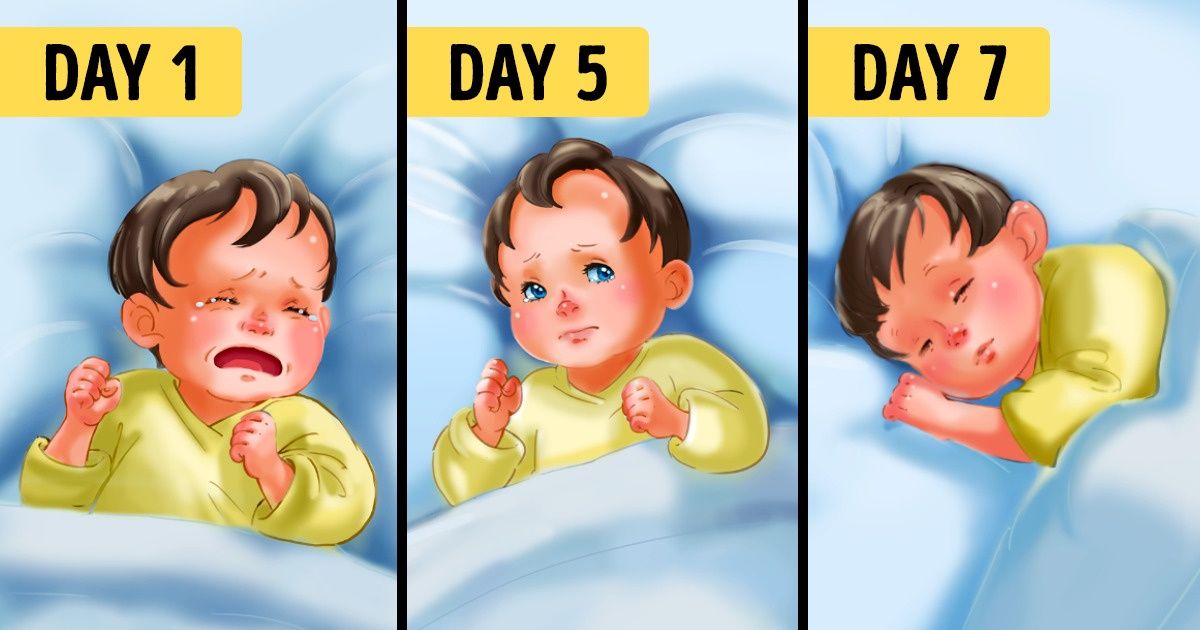
Getting a good night’s sleep is essential for a baby’s brain development, but many parents face certain difficulties when it comes to putting their baby to bed at night. Some kids won’t stop crying while others can’t fall asleep without their parents being in the same room with them. Luckily, there are proven ways to help your baby fall asleep faster, and 5-Minute Crafts is ready to teach you how to use them to save your nerves and make putting your baby to bed a pleasant experience.
Basic rules
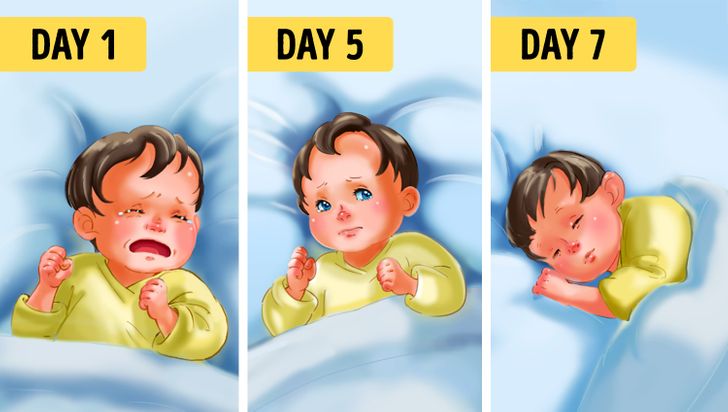
Every method has its own special features, but there are some ground rules parents should follow:
- The perfect time to start to sleep train your baby when they’re 4 to 6 months old. Keep in mind that the older the baby is, the more likely it is that they’ve already developed certain sleeping habits and realized that their parents usually try to comfort them when they’re crying or that they don’t leave them alone at night.
-
If the method you choose implies leaving your baby alone in the room, you must be sure that they’re feeling well. There should be no risk factors that may prevent the baby from falling asleep or that may hurt them in any way.
-
Be prepared that the baby will likely protest your decision to try sleep training and embrace their crying as their way of showing you their attitude toward this idea.
-
You’re likely to see the first results after a week or 2 of training, but remember that every child has their own unique personality, so the time when they’ll be able to fall asleep on their own may vary.
Have a look at the basics of 6 sleep training techniques and the explanation of how they work that will help you decide which method is right for your baby.

You should put your baby to sleep and leave the room right away. Don’t enter the room no matter how loud the baby is crying. Your goal is to not comfort the baby and let them figure out how to soothe themselves and fall asleep on their own.
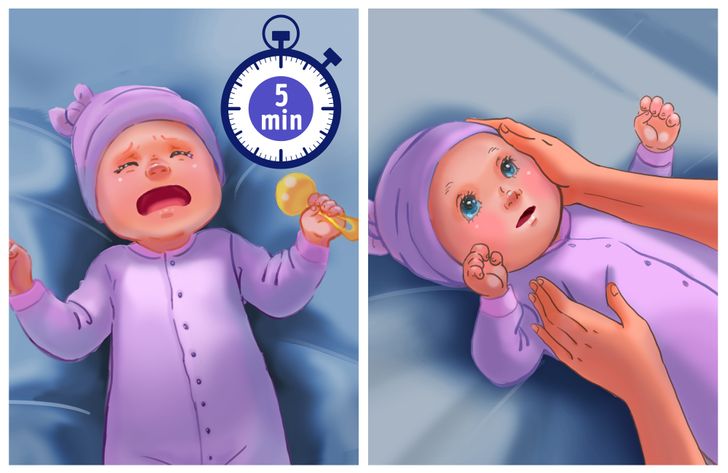
You should put your baby to sleep and leave the room right away. If a baby starts crying, you should wait for a little while (Ferber suggests starting with 3 minutes and gradually increase the time) and then go inside the room to soothe the child. You should gradually make the time intervals longer for when the baby is crying without you being in the same room.
When you’re calming down the child:
- don’t take them out of the crib
- don’t feed them
- don’t turn the lights on
- don’t spend too much time comforting the child
Just pat your child on the back or gently talk to them.
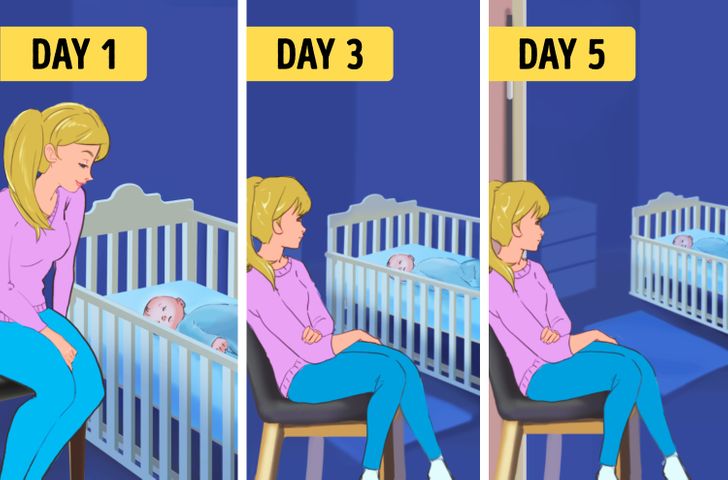
You should put your baby to sleep and leave the room right away. If the baby starts crying, go back in the room and sit in a chair that’s located near the baby’s crib. Move this chair further away from the crib once every couple of days until it’s out of the room.
Be consistent with moving your chair a bit further, so the baby understands that their behavior doesn’t really affect the situation. Try to be as boring as possible when you’re sitting in the chair to make the baby realize that this is not playtime and that they won’t get your attention no matter what they do.
Note: This method doesn’t work on children who are stimulated by the presence of their parents, even if they don’t interact with them.
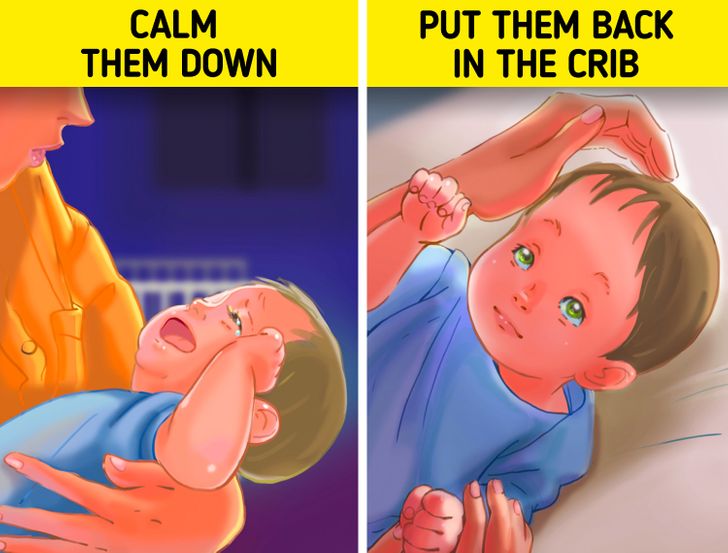
You should put your baby to sleep and wait for the baby’s response. If the baby is calm, leave the room. When the baby starts to cry, you should wait for a couple of seconds and see if the baby is going to calm down and then go to the baby and pick them up to soothe them.
As soon the baby becomes calm, you should put the baby back in the crib (it doesn’t matter if they are still awake) and give them an opportunity to fall asleep on their own.
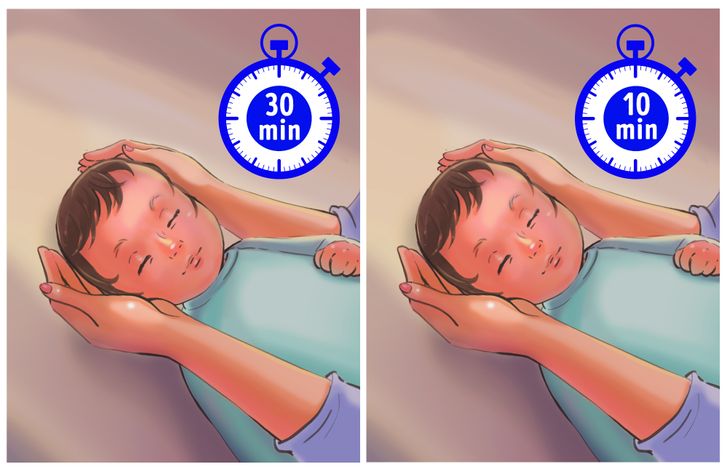
You can use any method of your choice to calm down your baby and put them to sleep (like rocking, singing, or massage). Your goal is to gradually minimize the time you spend soothing your baby before nighttime, until you don’t have to do it at all.
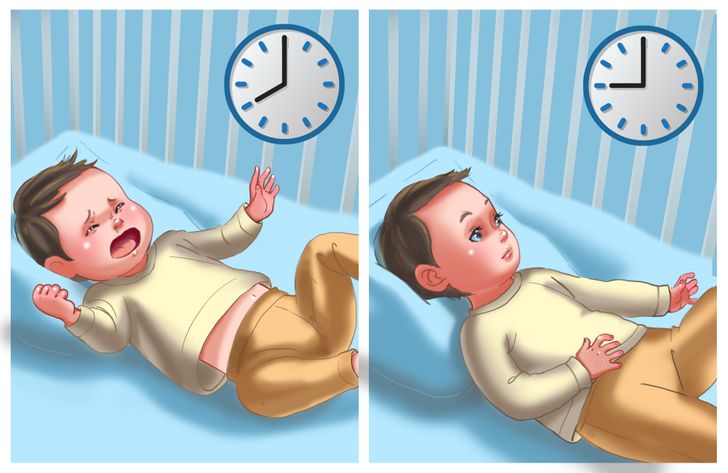
This method is based on the assumption that the baby won’t fall asleep until they really want to. So you should determine the time your baby usually falls asleep and turn it into the time you put the baby in the crib.
For example, if you usually put your baby to sleep at 8 p.m., but they cry for an hour and actually don’t fall asleep until 9 p.m., you should put them in the crib at 9 p.m. Then, go back to the initial time by gradually moving the time you put the baby in the crib to an earlier one.
Mistake 1. Putting the baby to sleep in a well-lit room
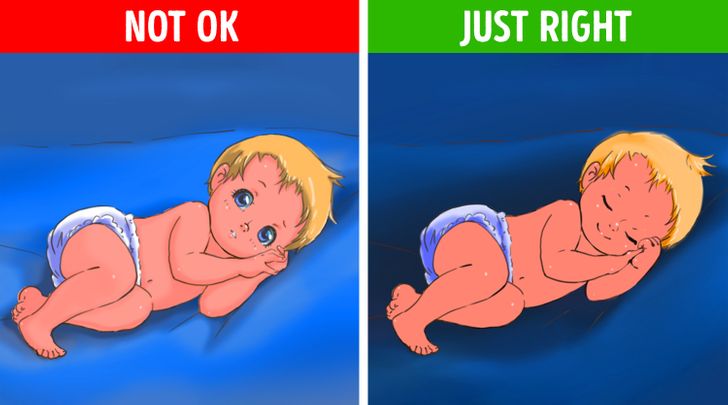
Mistake 2. Not recognizing signs that show the baby is tired

If you want to make falling asleep easier, put the baby to bed when you notice the first signs of sleepiness, like when the baby starts clenching their fists, looking away from you, or rubbing their eyes and ears.
Mistake 3. Letting your baby nap for too long during the day
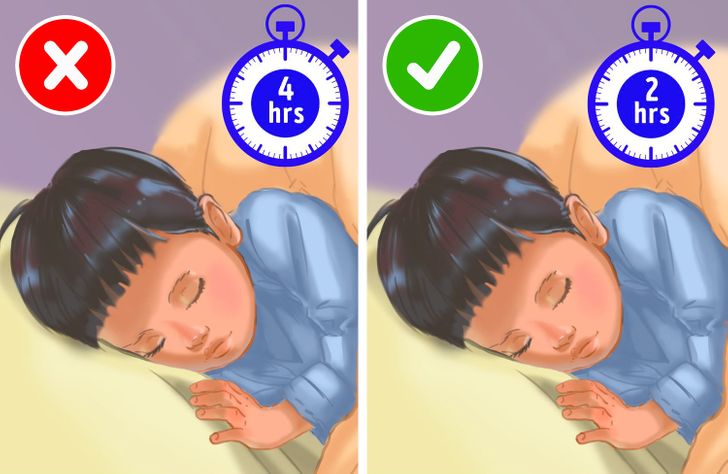
The toddler’s napping time shouldn’t exceed 3 hours per day, except for newborns. Of course, every child has different needs, but too much sleep during the daytime may interfere with their sleep schedule and make it more difficult for a baby to fall asleep at night.
Mistake 4. Not having a bedtime routine
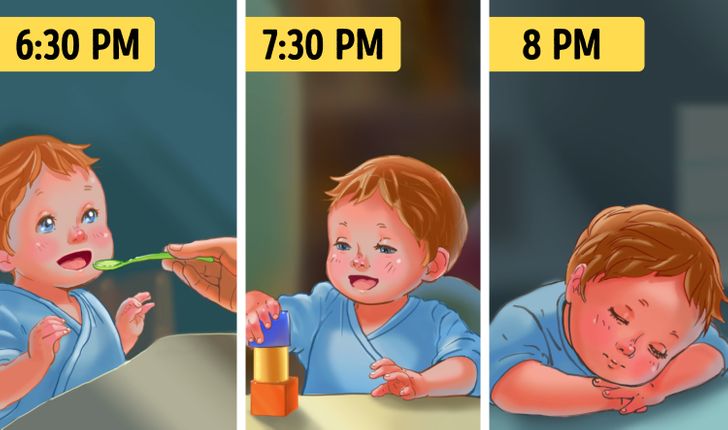
It’s important to come up with a bedtime routine and follow it every day. This way, your baby knows what’ll come next and this helps them to be more relaxed and prepared for falling asleep.